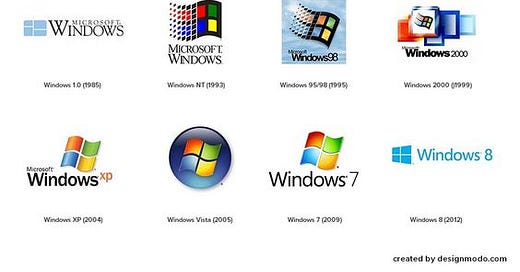An era ended this week, as the control over technology Microsoft and Intel held with Microsoft Windows and Intel x86 chips crashed and burned.
From the launch of Windows 3.0 in 1990 to this last week, there was an assumption that Wintel, as the two were called, were where computing happened. No more. OEM sales of Windows fell by a third, and so did Intel’s x86 chip sales.
Client computing has moved from your desktop to the palm of your hand. An iPhone or high-end Android device can cost over $1,000 but you don’t need a manual to use them. They’re intuitive. When they fail, you get another, and all your software follows you from the cloud.
Microsoft was ready for this. They became a Cloud Czar during the 2010s, building a huge network of scaled data centers using open source software and cheap hardware. Intel supplied the cloud, and its data center business beat expectations last quarter, but it was not ready for the change. Its stock fell another 10%, and the company is now worth barely one-fourth the new chip leader, Nvidia.
But Intel will survive. Intel must survive. After decades of drift, of arrogant marketing, and of scandal, Pat Gelsinger returned as CEO a few years ago to plot a new course. Instead of basing its business on designs, Intel will become a foundry, a chip-manufacturing giant working on behalf of others.
It’s the biggest bet of the decade, and you’re in on it, because U.S. government aid is helping Intel “in-shore” production to new plants in Arizona and Ohio. If this doesn’t work, because costs are too high or Intel can’t match the technology of Taiwan Semiconductor, it could mean the end of the U.S. as a great economic power.
Wall Street doesn’t care. If you want a friend on Wall Street, get a dog. I’m out almost half the money I plowed into Intel over the last few years, bewitched by Gelsinger’s vision. I may never get it back.
But such is the way of the tech business. We go on. Even the control of the Cloud Czars suddenly looks shaky. But we go on. The business of America waits on no man, and no company.
We just ask, what’s next?





